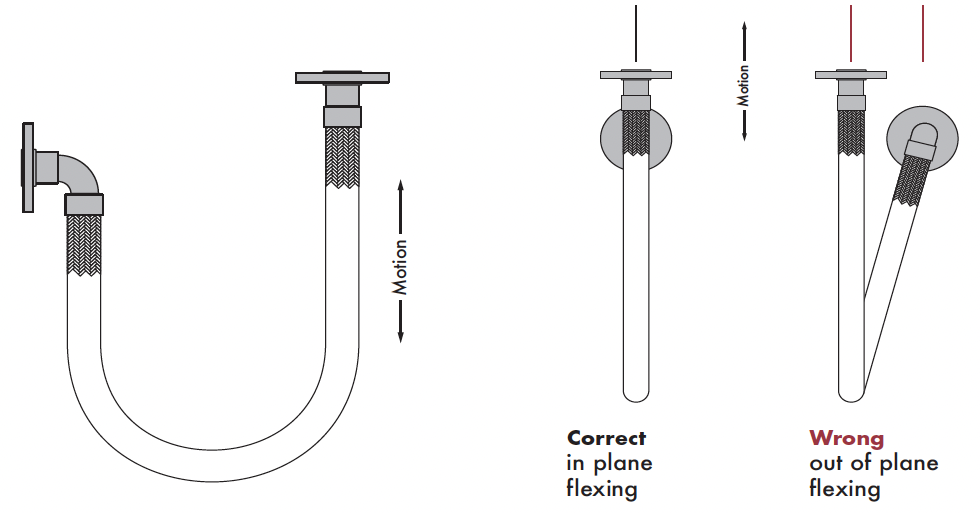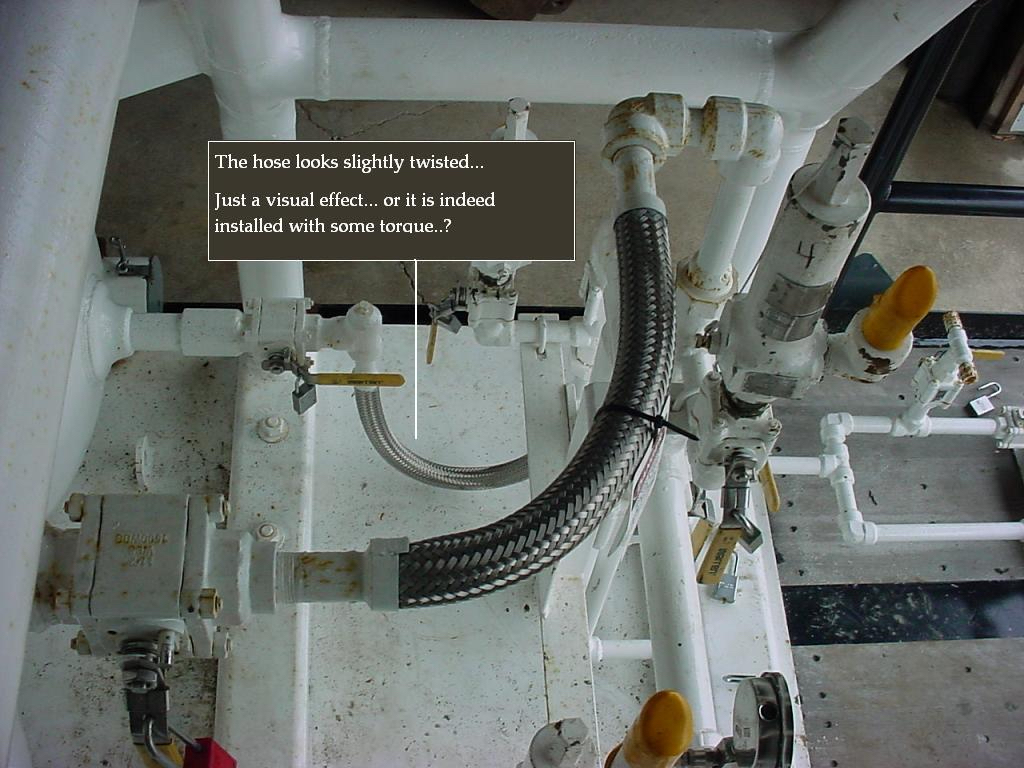Accommodating Out of Plane Movement in a Piping System
Note: To print this bulletin on accommodating out of plane movement in a piping system, please click here.
Flexible metal hoses are not designed to accommodate movement in more than one plane.
Let’s clarify: a SINGLE flexible metal hose is not designed to accommodate movement in more than one plane.
To move in more than one plane would require the hose to twist. We call this rotation of the hose along its longitudinal axis torsion, and it is guaranteed to reduce service life.

Wrong Shows Out of Plane Movement in a Vertically Installed Traveling Loop
This has to do with the way hoses are designed. Engineers plan for the stresses media flow and bending in a single plane exert on the hose. Exceeding these design limits leads to metal fatigue. The ultimate result is cracking.
When a hose experiences torsion, design limits are exceeded and cracks can develop along the corrugation crests. We call this failure mode stress cracking.
How Bad is it to Twist a Hose?
Comparing annular and helical hoses can help illustrate the impact of twisting. With annular hoses, the corrugations are parallel to one another. With helical hoses, the corrugations line up at a slight pitch, like the spine on a spiral notebook.
When pressurized, hoses seek to resume their former tube shape. With annular hoses, forces will exert outwards parallel to the longitudinal axis of the hose. With helical hoses, given the corrugations “swirl” around the hose, forces will exert both sideways at an angle to the longitudinal axis as well as outwards in line with it. This means helical hoses, when pressurized, have a natural tendency to twist, and in effect torque themselves.
This is not a classic example of torque, but it is worth noting because this natural tendency to twist contributes to shorter service life when compared with annular hoses in the same application. A cycle test conducted in Penflex’s lab found annular hoses lasted almost 90% longer than helical hoses in one dynamic cycling application.
Among other advantages, this is the kind of information that makes it easy to understand why annular hoses have largely come to replace the helical hoses that came before them. But it also stresses just how significant the impact of moving a hose out of plane can be.
Matter of Opinion vs. Matter of Fact
We recommend avoiding out of plane movements as a hedge against torsion, but anyone who has been inside of a plant can attest to the fact that hoses may move all over the place.
Given the infinite options for hoses and operating conditions, there is never going to be a one-size-fits-every-application rule when it comes to out of plane movement.
Maybe hoses bending in more than one plane do last long enough. Maybe they don’t. Without consistent tracking and historical data, it is difficult to know that a hose has failed prematurely–only that it has failed.

In scenarios where there appears to be no adverse impact on service life, it is likely the piping engineer was conservative in design, giving the assembly a longer length to ensure less stress on individual corrugations with each movement.
Perhaps it is not a high pressure application and the full pressure carrying capacity of the hose is not being realized, meaning there is “leftover” capacity to accommodate slight out of plane movements.
So while hoses can move out of plane, the ideal design is one that avoids or at least limits it, especially when working with minimum live lengths and in high pressure applications.
When to Use Another Hose
In some applications, movement in a piping system is such that a single hose will just not be able to address the situation. In these scenarios, our first line of inquiry is to find out whether the system can be re-designed to remove movement in the additional planes.
If this is not an option, we would need to consider a more complex arrangement where multiple hoses could be installed to accommodate the movement in multiple planes.
For further questions, please contact us.